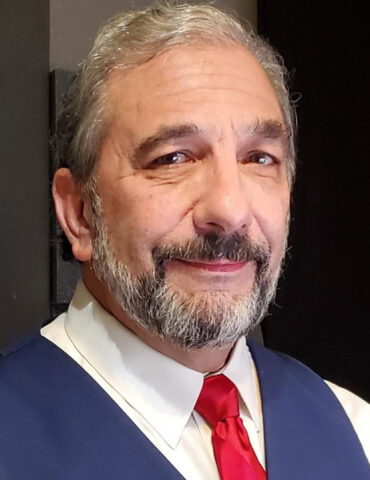-
 play_arrow
play_arrow
The CRUSADE Radio Network CRUSADE Radio Network
-
 play_arrow
play_arrow
The Church Doctrine Episode 1 - The Wright Stuff The Church Doctrine
-
 play_arrow
play_arrow
Audio Post Format TheKingDude

 Mandeville, LA – Exclusive Transcript – “The free market already exists within health care. In fact, I would say that’s the first unraveling we need to do is get rid of this idea that health insurance equals health care. This is all about marketing. The healthcare.gov site has bupkis to do with health care. It has everything to do with health insurance.” Check out today’s transcript for the rest….
Mandeville, LA – Exclusive Transcript – “The free market already exists within health care. In fact, I would say that’s the first unraveling we need to do is get rid of this idea that health insurance equals health care. This is all about marketing. The healthcare.gov site has bupkis to do with health care. It has everything to do with health insurance.” Check out today’s transcript for the rest….
Begin Mike Church Show Transcript
Mike: Mark Kreslins has another question. He wants to know what you think of the – say you need a knee replacement. I can get one from the Oklahoma Surgery Center for $15,000.
Dr. Wacasey: Yep.
Mike: How do I pay for that, though?
Dr. Wacasey: Maybe they’ll work out a deal with you. It’s like financing a car or something of that nature. I guess without not answering your question, because I don’t want to sound like a politician and not answer your question. To be honest with you, how much is a knee replacement worth, Mike?
Mike: It depends on how bad my knee is.
Dr. Wacasey: You’re almost right. It’s worth whatever the market will bear.
Mike: Right, understood.
Dr. Wacasey: Here is where we are, though. We’re in a situation where nobody, not even doctors, know where to price their services and their products. It’s so outrageously overpriced right now that I’m sure we’re going to have a lot of pain and misery in the initial years of doing this kind of thing. I’m not saying this is going to be easy, this transition, not at all. What I am saying is that it’s never going to occur – I put this in the very last chapter of my book. I said the health insurance and health care industries are never going to change their behaviors until you change your behavior. That is, millions of Americans need to get on board with this and understand how they’re being ripped off by the health insurance industry, how this idea that we need health insurance to take care of us is wrong. We need health insurance like we need a chainsaw. It’s an occasional thing only. That price needs to come down with the health insurance premiums. The only way that’s going to happen is through the free market.
[private FP-Monthly|FP-Yearly|FP-Yearly-WLK|FP-Yearly-So76]
The free market already exists within health care. In fact, I would say that’s the first unraveling we need to do is get rid of this idea that health insurance equals health care. This is all about marketing. The healthcare.gov site has bupkis to do with health care. It has everything to do with health insurance. Yet they use these two terms interchangeably so that people – it just maintains an illusion. I call it the big myth of health care. This has been a coordinated effort on the part of big business and the government for decades, to promulgate this myth. It’s so far down the red pill path, the blue pill path, if you will, or maybe it’s the red pill. It’s so far down in Wonderland that here we are.
You’ve got a system where when asked – I write a chapter in the book called “The Usual Suspects.” It’s one of my favorite chapters. Of course, my writing is my favorite. Actually, Shakespeare is my favorite. In any case, “The Usual Suspects” talks about: What is it that’s responsible or behind $12 aspirin? Forget the idea of the rising cost of health care. That’s just a phrase that gets people thinking that health care must be costly. It’s not. It’s really not. The most expensive antibiotic I administer in my clinic costs me right at $2 a dose. That’s what my cost is. I charge $30 for it, so I’m making a great profit on that medicine. I’m not charging $900 like they do down the street. The usual suspects that always gets thrown out there by the media –
Mike: The Keyser Sozes of the medical industry.
Dr. Wacasey: I quote Keyser in the – Keyser, the greatest trick the devil ever pulled was convincing the world he didn’t exist.  The health insurance industry has convinced the world that they’re not responsible for all this pricing debacle within health care, but they are. I point out that the usual suspects goes like this. The media says: What is it that’s responsible for the $12 aspirin? It’s the elderly, the chronically ill, the uninsured, malpractice insurance, malpractice payouts. Big Pharma is a big one, too. Oh, and it’s technology, don’t you know?
The health insurance industry has convinced the world that they’re not responsible for all this pricing debacle within health care, but they are. I point out that the usual suspects goes like this. The media says: What is it that’s responsible for the $12 aspirin? It’s the elderly, the chronically ill, the uninsured, malpractice insurance, malpractice payouts. Big Pharma is a big one, too. Oh, and it’s technology, don’t you know?
I’ve got news for you. My laptop computer here that I use every day to write on and look at the internet and listen to you on, this thing costs me about the same as my Commodore 64 did back in 1984. It ain’t technology that’s driving this. My $400 flat screen TV in my bedroom would have cost me $6,000 15 years ago when they first came out. I remember because I was salivating over it at Best Buy. The bottom line is that technology is not what’s doing it. Like all the usual suspects, all of these may have been present at the scene of the crime, but none of them pulled the trigger. Who was it that pulled the trigger and caused these aspirin to be $12? Health insurance. It was when health insurance took over paying for health care that the prices went out the window.
Mike: Let me jump in here because I want to try to limit this to an hour so you and I can both use it in marketing. I’ll have you back because you’re brilliant and a great radio guest. You really are. You’re doing great, doc.
Dr. Wacasey: Thanks.
Mike: I do the radio, you do the medicine. You’re doing great at doing the radio. Walk me and Mrs. Church through this. Again, I’ll use myself as an example. We’re on the Dude Maker Hotline with Dr. Wacasey, whose book is available. You can get a free chapter of it if you go to Healthcareonomics.com. You can get Chapter 7, which leads off with a video of Dr. Wacasey from his book. It’s Dr. Wacasey’s Guide to Buying Health Insurance and Health Care. The book is available on Amazon and iTunes and Nook.
Let me just walk the audience and you through what I am considering right now. I don’t have insurance. I don’t work for – I am the company. This is the company. Mrs. Church and I are considering what some of our friends have, which is one of these plans – one of them is called The Samaritan Plan. There’s another one that has more of a – it’s very similar to The Samaritan Plan but it’s made for Roman Catholics. Basically it’s kind of like a co-op. If you do have a major medical expense, then you send checks to – everyone is in a coop – it’s almost like Lloyds of London. You’re going to underwrite someone else if they need the service. Is that part of the solution? Does this have a place in this, or am I giving into the scam and buying insurance that I don’t need?
Dr. Wacasey: First of all, I am a licensed health insurance agent, although I don’t sell it. I did get my license to sell health insurance to at least give people the idea that I know what I’m talking about there, too. I would say this. I think these Christian sharing ministries and sharing programs, I have no beef with them whatsoever about the value. In fact, they’re priced pretty competitively from what I know, especially compared to some of these health insurance premiums. The only question or concern that I have about that would be this. It’s largely, as far as I know, an unregulated industry. I would definitely do your homework in checking out which one has the best reviews. Talk with some current, maybe former customers. Don’t be afraid to ask for that. Do your homework like you would with virtually any other big purchase you’re going to make. Research what it is you’re putting your money into before you give in and send them cash. I’m afraid that some of these, not all, but some of these may end up in the future as being these Bernie Madoff Ponzi schemes. That’s health insurance, too, Mike.
Mike: It is health insurance. Let me just say to you – there are some of you out there that – by the way, the telephone lines are open. I did the calculations on the premiums. Even to get into this co-op or whatever you wish to call it would cost us almost $5,000 a year. My own personal experience is I haven’t spent $5,000 a year for medical services, except for maybe one year when I had a medical procedure. It would have come in handy in that one instance. [mocking] “It’s better safe than sorry.” Isn’t that also part of – my friend David Simpson, who hosts the True Money Show here on the Crusade Channel every weekday from 11 a.m. to 1 p.m. here on the Crusade Channel on the Veritas Radio Network, David likes to say you only need insurance to cover what you can’t cover yourself.
Dr. Wacasey: That is the definition of insurance.
Mike: Right, but we don’t think of it like that.
Dr. Wacasey: We’ve been trained wrong. We’ve been trained to think of it as a third-party payer. One of the brilliant marketing things that the government of all things has gotten involved in pushing out there to the public and promoting is this concept of bronze, silver, and gold.
Mike: I know! What is it, the three wise men that go visit Jesus now bring us health insurance?
Dr. Wacasey: Where’s the frankincense?
Mike: Where’s the myrrh?
 Dr. Wacasey: What’s amazing to me is that people fall for this nonsense. This is nothing more than sheer marketing brilliance. I write about this on the blog, “The Good, The Bad, and The Bronze.” Basically this bronze, silver, gold idea is, who wants to go for the bronze? No Olympic coach says – you’re at the top of the ski hill and about to get out the shoot, “Go for the bronze, go for the bronze.” Nobody’s doing that. It sets up in your mind that silver and gold, and platinum no less, must be the better policies. I write in the book that health insurance companies make this intentional. They intentionally confuse people by throwing all these terms, deductible, premium, copays, coinsurance, networks. It would make even Einstein pull his hair out trying to keep track of all these variables, sitting down with his wife going: I don’t know what to do. That would be a nightmare. I would love to see Einstein trying to wade through his health insurance policy sign-up.
Dr. Wacasey: What’s amazing to me is that people fall for this nonsense. This is nothing more than sheer marketing brilliance. I write about this on the blog, “The Good, The Bad, and The Bronze.” Basically this bronze, silver, gold idea is, who wants to go for the bronze? No Olympic coach says – you’re at the top of the ski hill and about to get out the shoot, “Go for the bronze, go for the bronze.” Nobody’s doing that. It sets up in your mind that silver and gold, and platinum no less, must be the better policies. I write in the book that health insurance companies make this intentional. They intentionally confuse people by throwing all these terms, deductible, premium, copays, coinsurance, networks. It would make even Einstein pull his hair out trying to keep track of all these variables, sitting down with his wife going: I don’t know what to do. That would be a nightmare. I would love to see Einstein trying to wade through his health insurance policy sign-up.
What I’ve done is I took – I made a very simple, easy way for folks to compare the value, the ultimate value of health insurance plans. You’re exactly right. Your colleague is exactly right. You need health insurance for when you get hit by a train, which is not very often. Let’s think about that. How often do you get hit by a train or come down with cancer or need a knee replacement? The risk of that in any given year of policy coverage is pretty low. If you know you’re going to get hit by a train, if your knee needs to be replaced, perhaps you want to buy the better coverage. The problem is, what is the better coverage?
I’ve posed this question to person after person after person. What do you mean by good health insurance? They say a low premium, a low copay, and a low deductible. For real? Are you serious? Let me get into this. I created Dr. Wacasey’s Equation, which is a truly objective way of comparing health insurance plans. It’s very simple. It involves two variables that you can get from any insurance policy, your premium and your out-of-pocket maximum. There’s a caveat. There’s a catch. It ain’t the monthly premium we’re talking about. It’s the annual premium. You’ve got to add it all up for the entire year. This is something that people – teachers can’t even do this kind of math. Forgive me.
The bottom line is, with the premium, you add that up for the entire year and that is your cost of staying well. That is your best-case scenario. Then you want to add, What’s my worst-case scenario? What if I get hit by a train? Here’s where they get you. This is where all the marketing goes into. Health insurance companies love the idea of deductibles, which are [unintelligible], by the way, because they get you to buy these crazy expensive insurance policies. There’s a variable in there that nobody pays attention to, it doesn’t get promoted, and it lies above the deductible. That’s your out-of-pocket maximum.
When you hit your deductible, you ain’t through paying for your medical bills, in most cases. You have this out-of-pocket maximum. According to the Obama Administration, under Obamacare, the maximum per family for 2016 is $13,700. You can have a $0 deductible plan and yet have an out-of-pocket maximum of $13,700. You could still end up owing $13,700 once all is said and done if you get hit by a train. People don’t understand this. They go for these deductibles. Again, it’s the out-of-pocket maximum. It’s the O-variable that represents your worst-case scenario. That’s how much you’re going to spend if you get hit by a train.
[/private]
Dr. Wacasey’s Equation becomes very simple. It’s P + O = W. Your premium plus your out-of-pocket maximum equals W, and that’s what you could spend on health insurance and health care next year under this particular policy. When you start comparing these W’s, it’s unbelievable. I submit to you, I’ve looked at hundreds of these, analyzed hundreds of these. I have yet to find a serious case where the bronze isn’t the best. There are some exceptions to that rule. First of all, if you take very expensive drugs, but I’m not talking about the $100-a-month drugs. I’m talking about thousands of dollars a month. In that case, you probably want to go for a plan that has a better prescription coverage. Everybody else, which is 99 percent of the population that doesn’t take these crazy-priced drugs, really the bronze turns out to be the best. I can’t say that bronze is always the best, because I haven’t analyzed every plan. I will say that in most, in the vast majority of cases, virtually all the cases I’ve looked at, it doesn’t make sense to go for the gold or to go for the silver even.
Let me ask you this question. I’ve analyzed Texas Teachers health insurance for the past four years. I haven’t been able to get the word out to these people. I’m going to illustrate for you just exactly how much money I could have saved them in 2015. Let’s say there is no Mrs. Church and it’s just you. You’re a single guy. You’re a coach of a local basketball team here in the Dallas-Fort Worth area. You’re in the Texas Teachers Retirement System. That provides you with your health insurance. They insure almost half a million people in Texas, by the way. You’re part of this cog. You’re a cog in this machine. If you ever looked at two policies, would you pay $3,200 extra to get the gold plan versus the bronze plan if the gold plan had a deductible – this is kind of confusing. Forgive me, I’ll repeat it. The deductible is $1,500 less than the one for the bronze. In other words, the bronze plan is a $2,500 deductible, but the gold plan only has a $1,000 deductible. That’s a $1,500 savings. To get that, if you do the math and add it up, not by the month but by the year, you got to pay $3,200 bucks in premiums extra to potentially save $1,500. Would you ever do that?
FOLKS, a message from Mike – The Project 76 features, Church Doctrine videos and everything else on this site are supported by YOU. We have over 70, of my personally designed, written, produced and directed products for sale in the Founders Tradin’ Post, 24/7, here. You can also support our efforts with a Founders Pass membership granting total access to years of My work for just .23 cents per day. Thanks for 17 years of mike church.com! – Mike
Mike: No.
Dr. Wacasey: Are you sure?
Mike: I’m out.
Dr. Wacasey: Well, 46,000 Texas teachers did in 2015. They wasted $150 million doing this. They just wasted it. They threw it away. They gave it to Aetna. Now, when you take this group writ large and you look at everybody under these plans – I put a little three-minute video on my post. The post on my blog from July of this year is called “Texas Teachers Get SCREWED – Again!”
Mike: I saw that.
Dr. Wacasey: Read it. You’ll be so angry. I put a little three-minute video on there going through the math and how I arrived at these figures. If you take the number of Texas teachers – by the way, 53 percent of these Texas teachers upgraded to silver or gold; 53 percent of 429,000 people upgraded. In doing so, they wasted $665 million, just threw it away, just gave it to Aetna for nothing.
Mike: We just give dollars away. Millions, billions, what’s a few trillion between friends? No concept because of the paper money system, no concept whatsoever.
Dr. Wacasey: We’ve been trained wrong. We’ve been trained wrong.
Mike: No concept whatsoever of what money actually is.
End Mike Church Show Transcript
Written by: AbbyMcGinnis
doctors Dr Wacasey free market health health care health insurance health premiums hospitals insurance marketing medicine ObamaCare propaganda
Similar posts
Featured post

Latest posts

Parrott Talk-The Christian Nationalist The Regime Warned Us About

Tuesday Pile of Prep – Kansans Ain’t In Kansas Anymore

Parrott Talk-Never Fear America, Trump Is Here To Save You From The Eclipse And Biden

The Mike Church Show-Trump’s States Rights Abortion Appeal Is An Appeal TO Satan’s Rights

The Mike Church Show-Biden Brings U.S. Closer To WWIII
Current show
Upcoming shows
Mike Church Show Weekend Best Of
12:00 am - 11:59 pm
Condimentum Elit
11:40 pm - 11:55 pm
Chart
HERE IT GOES YOUR COPYRIGHT TEXT. CAN ALSO CONTAIN LINKS LIKE THIS






Post comments (0)